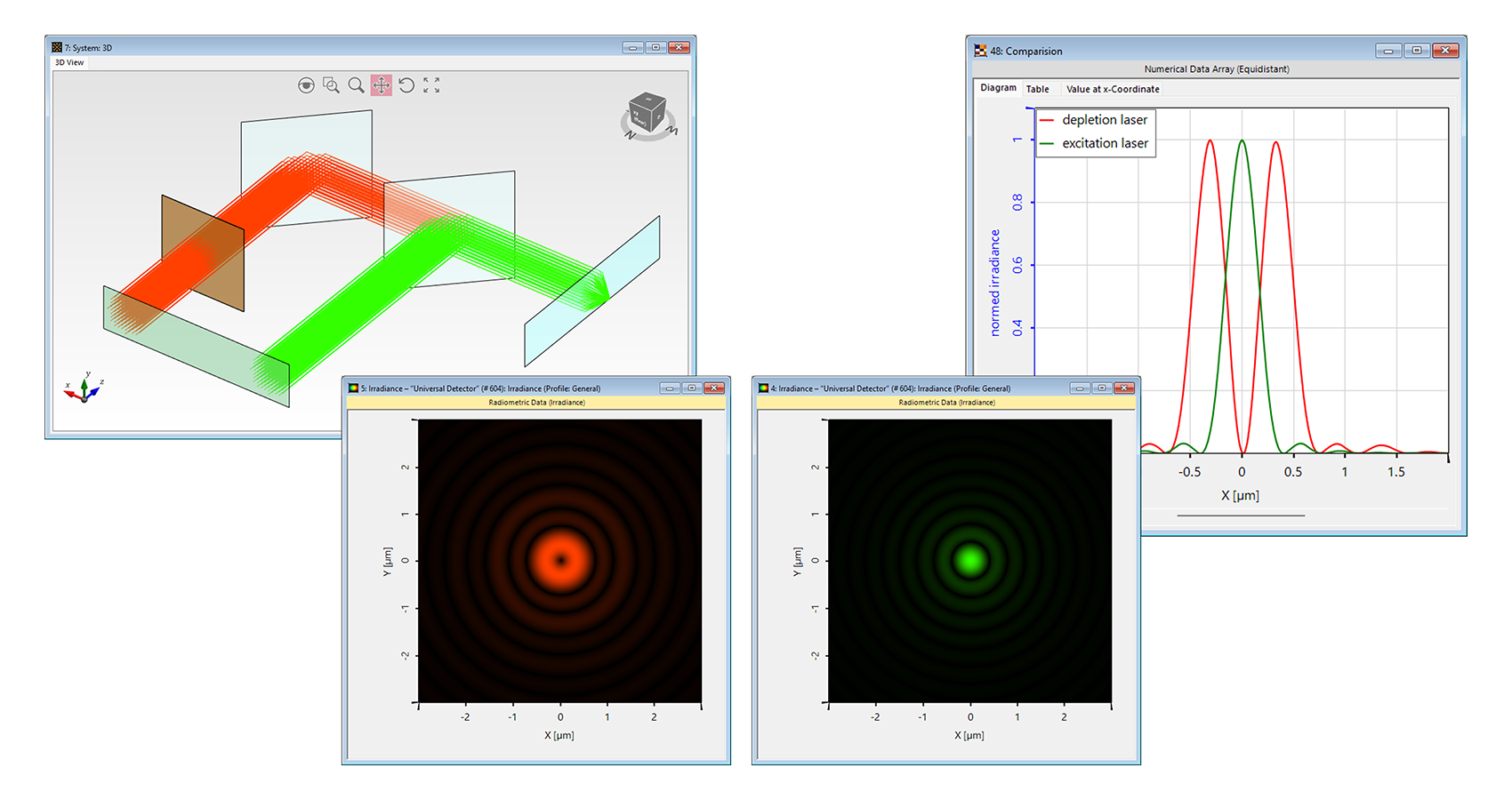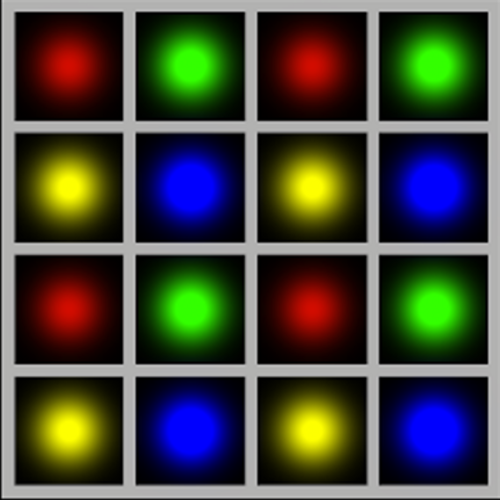Principle of Stimulated Emission Depletion (STED) Microscopy
Abstract
Stimulated Emission Depletion (STED) Microscopy describes a commonly used technique to achieve super resolution in biological applications. In this method two laser beams – one normal, one transformed into a donut-mode – are superimposed onto a fluorescent specimen. By using excitation and depletion of the fluorescent processes and exploiting the resulting saturation effects, the back reflected light exhibits a much higher resolution compared to usual microscopy techniques (e.g., widefield microscopy). In this document the basic setup of such a device is presented. For modeling the saturation effect, an equivalent aperture is applied in the focal region.
VirtualLab Fusion Configuration
-
 VirtualLab Fusion
VirtualLab Fusion



